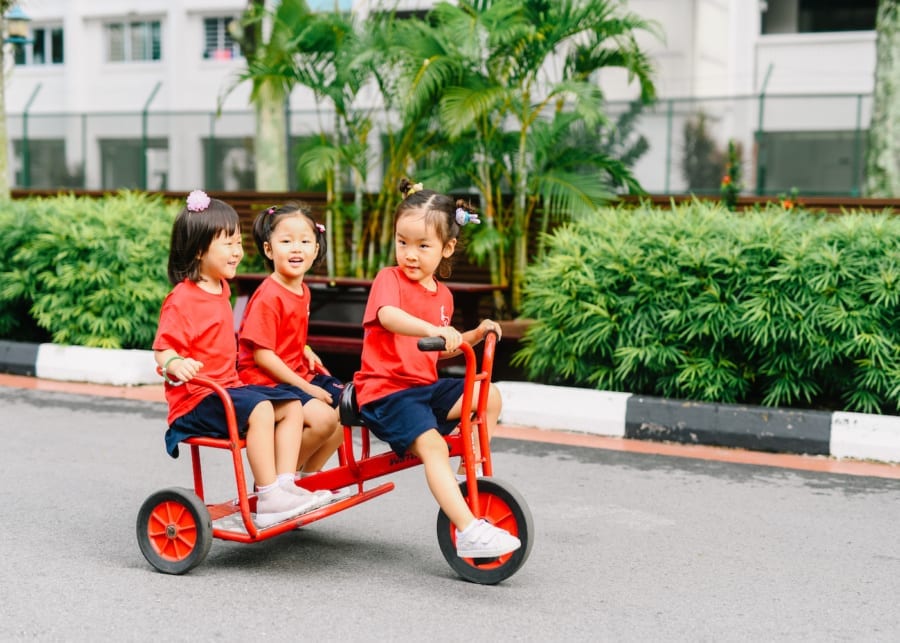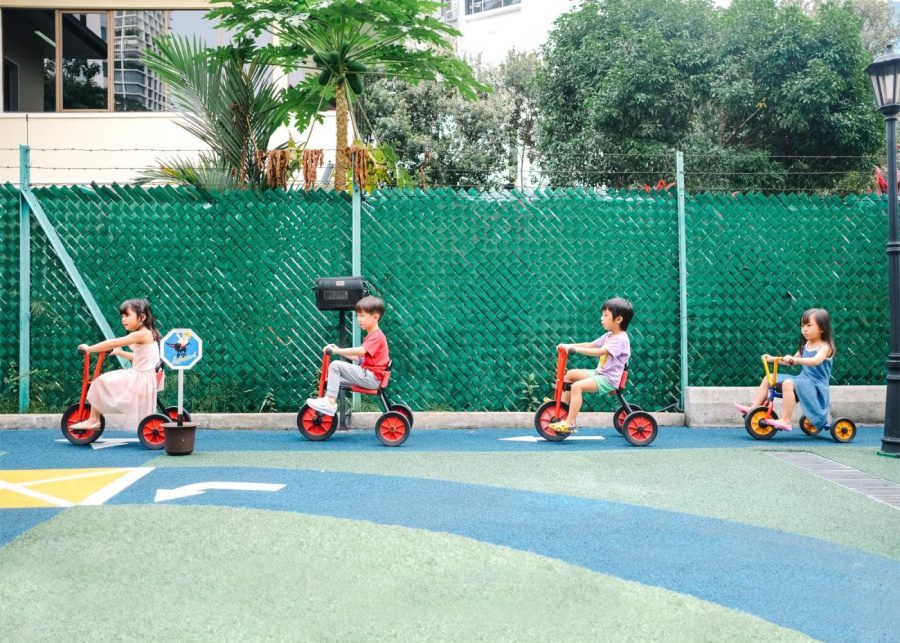
When it comes to learning for little ones, the best way to get them engaged is by having lots of fun through play! Here's what the experts have to say...
As parents, the first thing that comes to mind when we hear the word ‘play’ is probably fun, games and lots of noise… but probably not learning. But education experts say otherwise. For young children, especially preschoolers who are just starting their learning journey, it’s important that going to school is fun. They need to be encouraged and excited, so what better way to do it than through their favourite thing in the world: play?
We spoke to experts from some of Singapore’s top international schools to understand more about learning through play. Plus, how us parents can offer our kids more playful learning opportunities at home…
The Schoolhouse by Busy Bees

The Schoolhouse by Busy Bees knows that children are active, curious and competent learners. As such, this cool preschool adopts an inquiry-embedded play approach to teaching and learning for its students. “We believe that play is a natural learning environment for children as it is safe and familiar to them. It begins with children wondering about something interesting, strange or intriguing in the curriculum, before forming questions and pursuing meaningful investigations with teacher’s facilitation to explore the answers. This allows children to acquire knowledge, skills and dispositions for holistic development, as well as experience the joy of learning that upholds curiosity, creativity and confidence.”
The educators at The Schoolhouse by Busy Bees also go to great lengths to provide its little learners with a nurturing environment where they are encouraged to be curious and happy explorers. Using the environment as the third teacher, children take on a constructivist approach to play, which focuses on creating intentional, meaningful, and inquiry-embedded play-based learning experiences. By empowering curiosity, creativity, and confidence in children to learn holistically through unhurried, pleasurable caring experiences, children are ready to take on the world with minimal intervention by adults.
You can see The Schoolhouse by Busy Bees’ inquiry-embedded play approach in action by scheduling a visit to any of their centres.
Holland International School

Happiness is at the core of everything Holland International School does. As such, it comes as no surprise that play takes centre stage in the learning experience in its Preschool. Not only does play come naturally to children, it’s also the thing that makes them the happiest. While learning through play, children at this bilingual Dutch-English preschool are encouraged to become explorers, creators, and problem solvers. Playing ignites their curiosity and creativity; and it also teaches them to collaborate. Learning to collaborate is easy in a small community such as Holland International School’s Preschool as each child gets personalised attention. Thanks to the International Primary Curriculum, children develop important skills that will help them thrive in school and beyond.
Blue House International

At Blue House International, its Deputy Head of School Abhi Prakash says, “Play comes naturally to children, and it is the primary pathway for them to participate within their social and cultural communities. In play, the possibilities are endless. During play, children don’t merely engage with objects and materials – they develop meanings, ideas, roles, rules and relationships, making cognitive leaps and transformations.” It also makes them more creative and curious, and works their gross and fine motor skills and their social skills. “Kids learn to share and respect their friends and as they grow and develop,” adds Abhi. “Play is often the foundation for building those social skills we need well into our adulthood!”
Tanglin Trust School

Tanglin Trust School’s Infant School has received high praise for its impressive Early Years programme. Keeping in mind its vision to cultivate a balanced education, the school has launched a new outdoor-based learning model for nursery-age children. Tanglin’s Forest School Programme takes learning outside by incorporating the outdoors into its curriculum. Little ones are encouraged to use authentic materials, appreciate the natural environment and use their surroundings as the “third teacher”. Learning in a new setting that’s not confined to a classroom can develop their academic, creative, personal and social skills, and also stimulate physical development.
“Tanglin’s Forest School Programme is a welcome alternative for children to be active, to learn and to be immersed in the great outdoors. The programme is specially developed to complement the existing curriculum to enhance children’s self-confidence, resilience, as well as their spiritual, intellectual and creative development. Our team here at Tanglin Trust School developed it to encourage discovery, hands-on learning, collaboration and allow children to explore the environment at the same time,” says Paula Craigie, head of the Infant School at Tanglin Trust School.
Nexus International School (Singapore)

The interesting thing about play is that it offers children authentic experiences, or ‘doing’. Children present their own problems and, from these, explore solutions and develop understandings of the real world. “By comparing and contrasting information they’ve gained from each new experience to what they already know, they are actively constructing their knowledge of the way the world works.” says Lisa Cheyne, Nursery and Kindergarten phase leader at Nexus International School (Singapore). And yes, they are actually learning. “It’s evident in our parent-teacher conferences, learning assessments and exam results,” she adds. “Children are able to articulate their understanding beyond concepts as they question, discover, test, make mistakes and learn – gaining a complex and deeper understanding to the lesson.”
Singapore American School
Hannah Connors, a preschool teacher at Singapore American School, suggests: “Through play, children and adults can come together to encounter, explore and impact the world. At home, parents can offer a wide variety of real materials for children that they can use in different ways. Parents can listen to their children’s ideas and see how they would like to play with the materials. Pots and pans from the kitchen might become musical instruments. Cups and saucers could inspire a tea party. A blanket might create a den, a teddy bear’s bed or a superhero cape. Children often use materials in surprising and wonderful ways. A simple cardboard box is filled with possibilities.”

